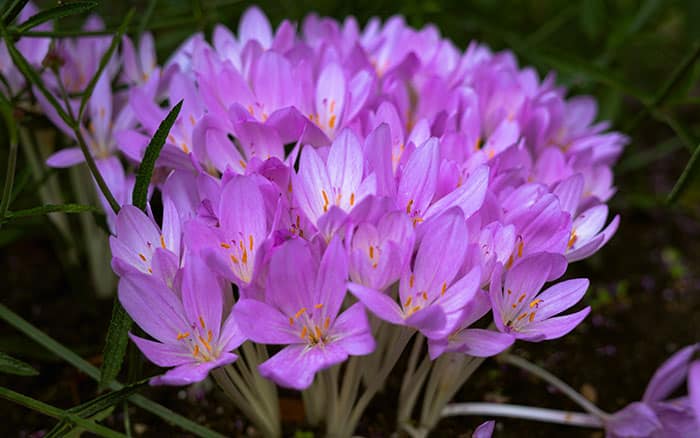Bulbs are an easy, low-maintenance addition to borders and containers. They extend garden colour beyond the summer months. These vibrant blooms bring joy to gardeners and provide essential nectar and pollen for pollinators like bees and butterflies.
Right now, garden centres and online retailers are selling a wide range of autumn-flowering bulbs. Often at a brilliant sale rate. These include autumn crocus, crocosmia and nerines. Now is the ideal time to plant them, being ready to make new root growth to flower later this year.
Why autumn bulbs are ideal
Autumn bulbs are ready to grow new roots immediately after planting. This makes now the perfect time to get them in the ground. They flower from late summer into autumn, filling the seasonal gap and adding drama just as other flowers fade.
The best Autumn bulb performers
Autumn crocus (Colchium)
These resemble spring crocus, but are taller and flower without leaves. Their delicate pinks and purples appear in early autumn.
Crocosmia
Bright, fiery tones of red, orange and yellow make these popular in summer and autumn displays. They’re reliable and easy to grow.
Nerines
These provide vibrant late-season colour with bright pink, strappy flowers that thrive in sunny spots and well-drained soil.
Cyclamen hederifolium
Flowering from August, this hardy cyclamen has dainty blooms and marbled leaves, perfect for naturalising beneath shrubs.
Preparing the soil
Well-draining soil is the one big requirement for bulbs, as soggy ground causes rot.
If drainage is an issue, add and mix in lots of grit, gravel or gritty sand to the soil before planting. Well-rotted compost can also be added, but it is not as long-lasting.
Planting depths
The requirement for most bulbs is that they are planted two times deeper than the size of the bulb. However, cyclamen prefer to be buried with just a light covering of soil.
If your soil is sandy or subject to harsh frosts, plant three times the height of the bulb.
Spacing matters
Planting distance between bulbs is not as important as it is with many other plants. Many have narrow leaves that take up little space; in fact, they often look better planted close together.

Dormancy
Bulbs become dormant after flowering. Leave them in the ground but ensure the soil stays fairly dry. Too much moisture can lead to rotting.
Though dormant, bulbs are busy inside, forming next year’s flower buds. They need warmth, dryness, and light. Avoid shading them with large leafy plants. With the right care, your autumn bulbs will return stronger and more beautiful each year.
For more great gardening advice, make sure you head to my YouTube Channel. Make sure you’re subscribed with notifications on so you don’t miss any of my new videos.
Frequently Asked Questions
1 – What type of soil is best for autumn bulbs?
Free-draining soil is essential. Add grit or gravel to improve drainage and prevent bulbs from rotting.
2 – What Do autumn bulbs come back every year?
Yes, many autumn bulbs are perennial and will return each year if planted in the right conditions.
3 – How deep should I plant crocosmia bulbs?
Plant crocosmia bulbs roughly 8-10cm deep – about twice the bulb’s height – for strong roots and upright growth.
4 – Why didn’t my bulbs flower the next year?
Bulbs may fail if they were too wet whilst dormant or shaded by other plants during bud formation.
5 – Do I need to lift and store autumn bulbs each year?
Not usually. Most autumn bulbs can stay in the ground if the soil drains well over winter.


Leave A Comment